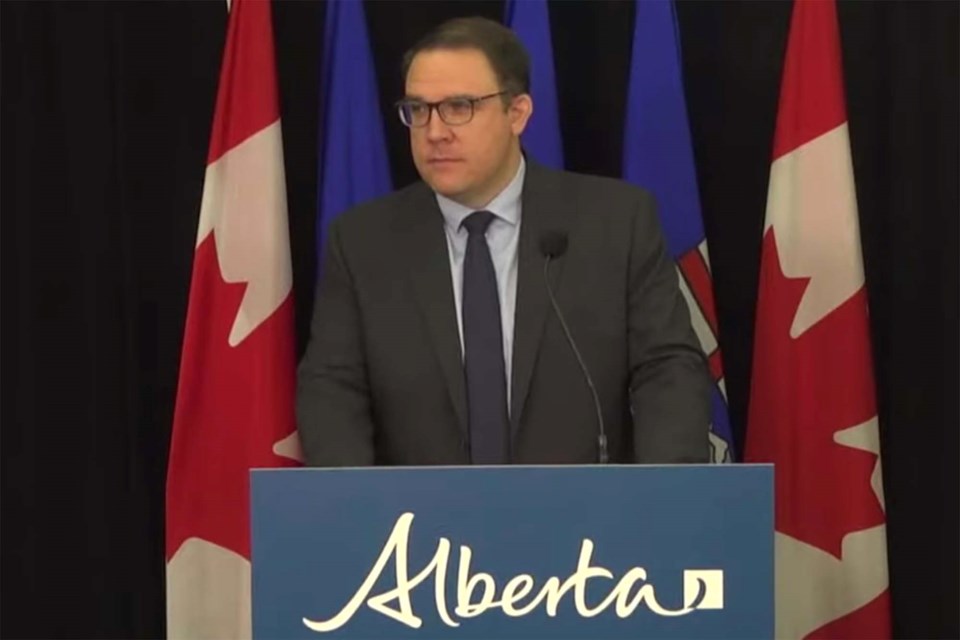Local politicians had mixed reactions to the province's first-quarter fiscal update, released last week.
On Aug. 31 the province released its 2022-23 first-quarter fiscal update and economic statement, which showed a forecasted surplus of $13.2 billion due to high resource revenues, which will allow the province to put down “the largest single-year debt repayment in Alberta’s history” at $13.4 billion.
St. Albert-Morinville UCP MLA and Associate Minister of Natural Gas and Electricity Dale Nally lauded the province's plans to make a historic debt repayment, while St. Albert NDP MLA Marie Renaud called some of the fiscal decisions by the government short-sighted.
“We are avoiding mistakes made with past surpluses and are using this opportunity to stabilize the province's finances and strengthen our economic future,” Nally said in an email to The Gazette.
“Paying down debt and helping future generations of Albertans cushion economic ups and downs are both priorities for our government, and we're proud to be making progress on each of them,” said Nally.
Documents from the province state the surplus is based on the increase in energy prices due to Russia’s invasion of Ukraine and fears to supply shortage as well as “high revenue forecast for bitumen royalties, other resource revenue, and corporate income taxes.”
Nally said the surplus is “significantly higher than projected in the budget.” The 2022 Alberta budget projected a surplus of around $500 million.
Along with the update, the province announced it will be re-indexing personal income tax to match inflation, retro-active to the 2022 tax year.
“Many Alberta taxpayers will benefit from lower tax withholdings in 2023 and will receive larger tax refunds, or a reduction in their taxes payable, for 2022 when they file their taxes in spring 2023,” Nally said.
Renaud said it was quite disappointing the province did not re-index social supports such as seniors’ benefits, income supports, and Assured Income for the Severely Handicapped (AISH), along with the re-indexing of personal income taxes.
“I mean, if a $13-billion surplus isn't enough to restore what [the province] took away in 2019, I really don't know what it is,” she said.
Renaud said paying debt is not a bad thing, but the government needs to make smart decisions.
“Continuing to ignore the fact that we are not supporting really vulnerable people and disabled people and seniors at the level where they can keep their heads above water is going to create all kinds of problems,” she said.
Renaud said the lack of support is stressing out other systems such as health care and the justice system.
“For them to say we're making life better for Albertans, and this is about our future, well, it's not really, because you can't just look at one picture,” she said.
During a press conference, in response to a reporter’s question about the province’s move to re-index personal income taxes while ignoring supports such as AISH, Finance Minister Jason Nixon said he is re-indexing income taxes for everyone who pays into taxes in the province.
“The decision to re-index will save Albertans about $300 million in tax in 2022 and growing to, by 2024, almost a billion dollars will be saved by Alberta taxpayers. It will also remove about 85,000 to 95,000 more people from the Alberta tax rules and certainly, those will be amongst our lowest-income people inside this province and certainly from the tax code perspective," he said.
Nixon said social services continue to be critical for the government and that when it comes to AISH, Alberta puts “37 per cent more than comparable provinces in the AISH program.”
Nixon said the finance ministry has been tasked with combating affordability issues created by inflation and they have been focused on ways to relieve those pressures, such as removing the fuel tax and bringing in programs such as electricity and natural gas rebates.
“What we committed to in the last fiscal update was not to bring forward solutions that would make that inflation situation worse. And that's why … the continued focus on measures that are making life more affordable for Albertans but also combating inflation issues and not making them worse,” Nixon said.
Data from the province showed the total revenue is forecast to be $75.9 billion, with increases of $14.6 billion in resource revenue; $0.8 billion in tax revenue; $0.8 billion in federal transfers and other revenue which, documents from the province state, is partially offset by a $2.9-billion reduction in investment income.
The capital plan is forecasted at $7.9 billion, up from the $7.5 billion the province slated for Budget 2022, according to data from the province. The capital plan is a long-term budget that focuses on infrastructure development such as highways and LRTs, as well as supporting the health-care system, and private-sector investment. A key investment of the capital plan is funding for the Local Government Fiscal Framework which will replace the Municipal Sustainability Initiative in 2024-25.
Total expenses are forecasted at $62.7 billion. Taxpayer-supported debt is forecasted at $79.8 billion, according to provincial documents.
The province said it will also make the largest-ever single-year investment in the Heritage Fund at $2.9 billion.




